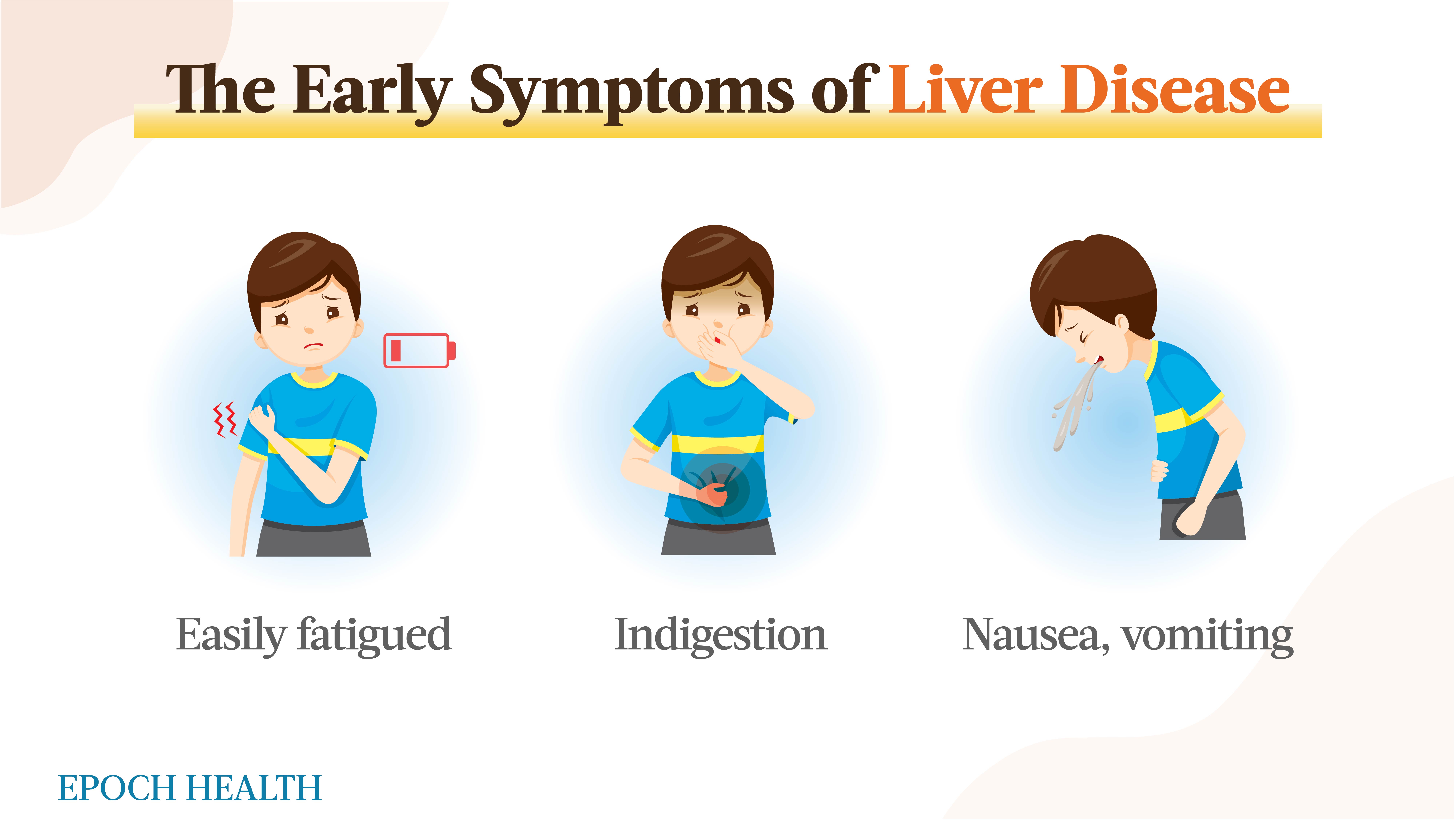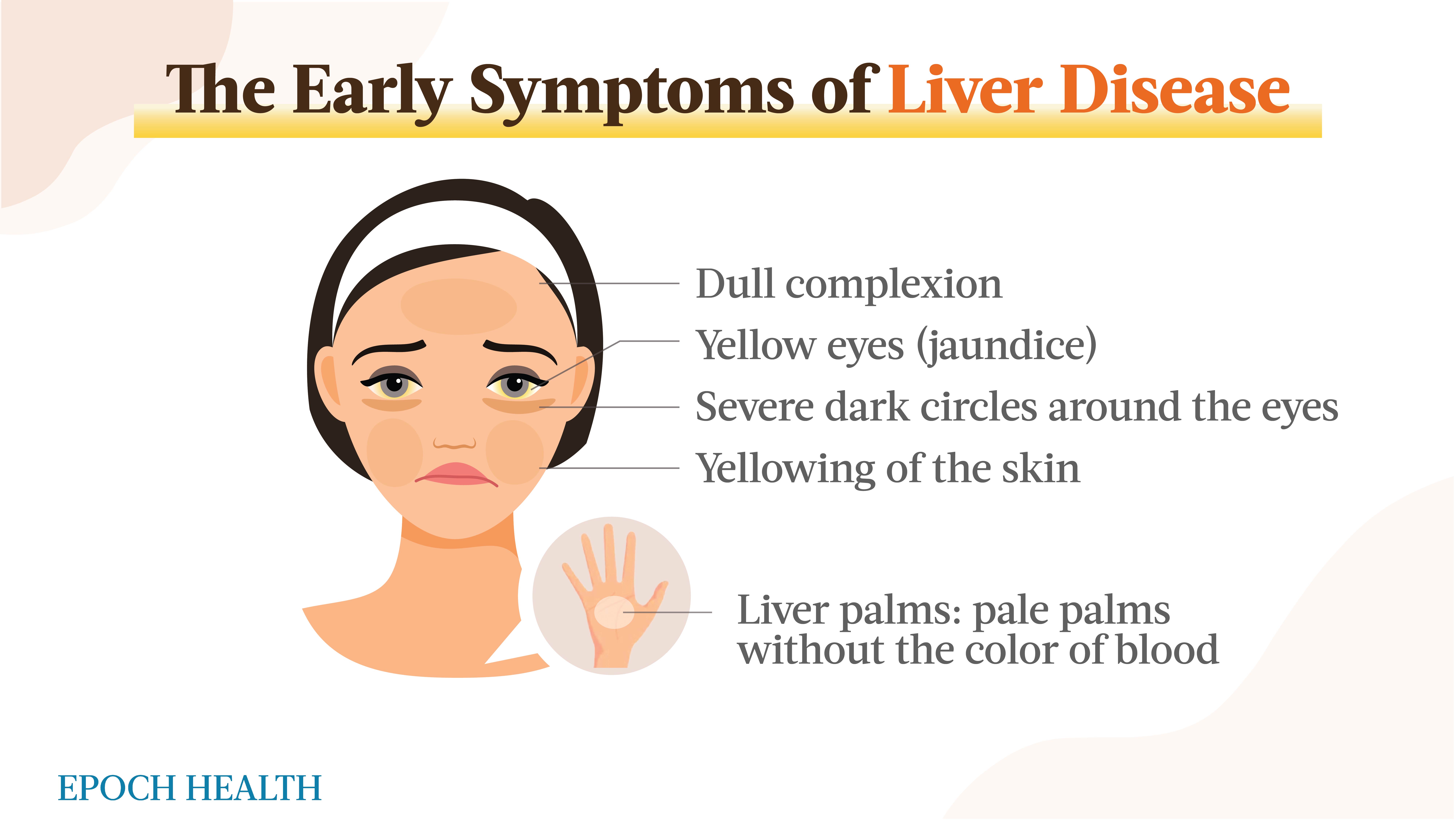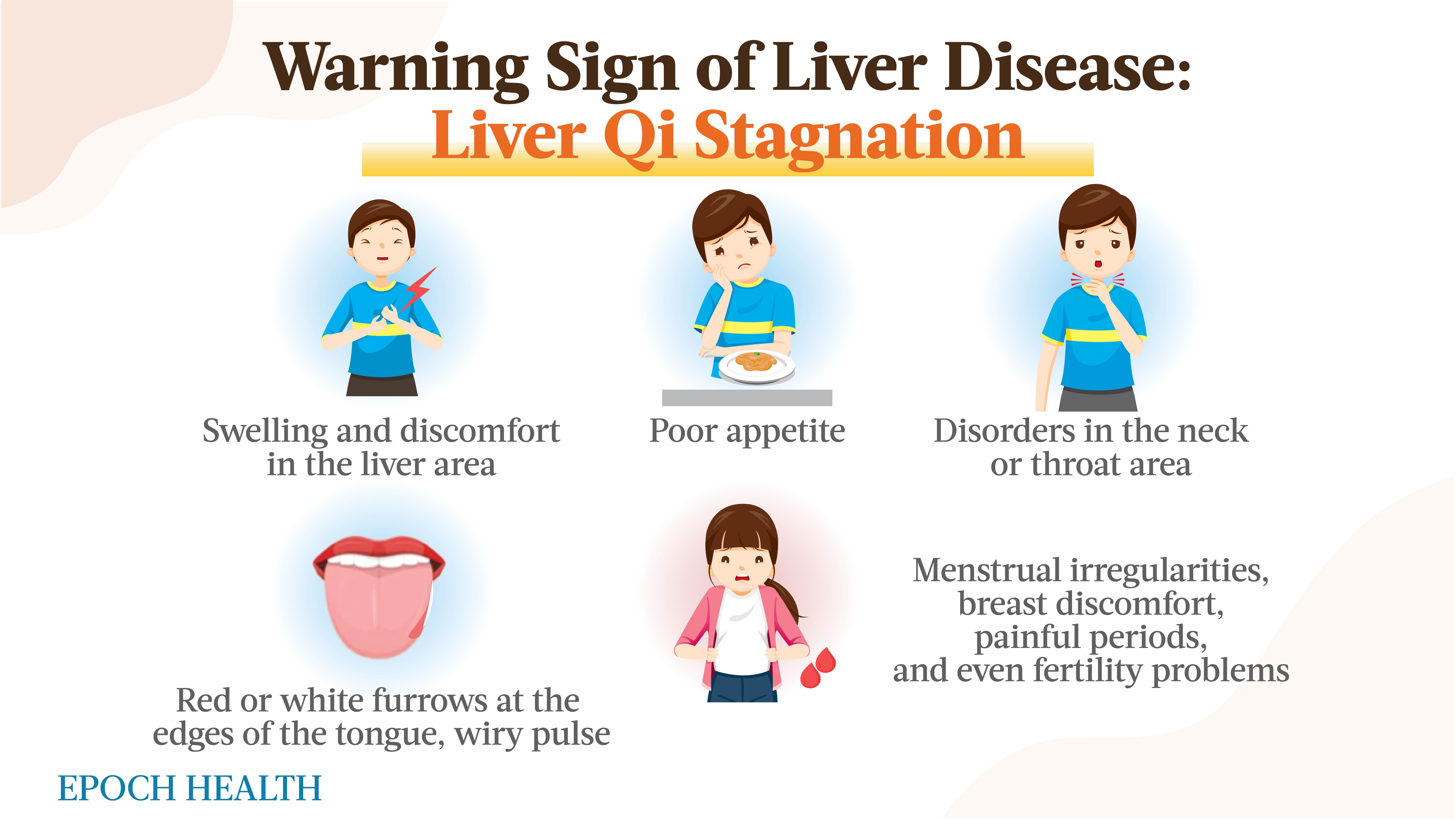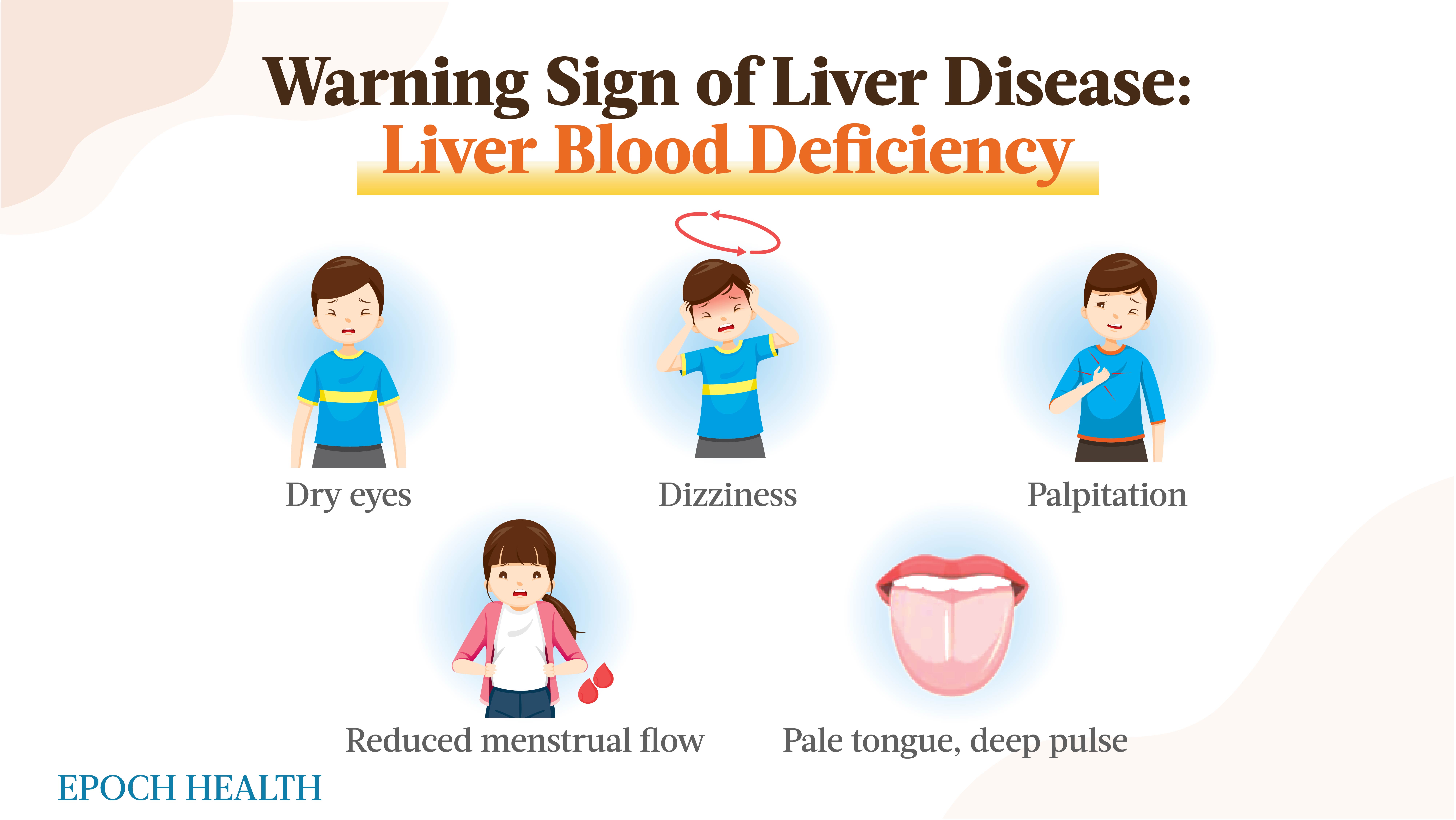Recognizing Liver Distress Signals: Springtime Liver Protection Tips
The liver is an essential organ responsible for detoxification, bile production, fat breakdown, and energy storage. However, it is known as a silent organ, as liver problems often go unnoticed until they become severe. On the “Health 1+1” program, Jonathan Liu, a professor at a Canadian public college, shares various warning signs that the liver may emit, helping people detect problems early. He also provides some tips on how to protect the liver during the spring season in everyday life. According to data from the American Liver Foundation, over 100 million people in the United States have some form of liver disease, with 4.5 million adults (1.8 percent) having a confirmed diagnosis. If left untreated, liver disease can lead to liver failure and even liver cancer. In 2020, chronic liver disease or cirrhosis was the 12th leading cause of death in the United States. Five Early Warning Signs of Liver Disease Liu mentioned on the program that the body tends to exhibit certain symptoms when the liver starts to develop problems, which may include the following: 1. Easily fatigued—feeling tired even after performing simple tasks where the mind and body cannot keep up 2. Indigestion—stomach bloating, acid reflux, and even feeling nauseous or vomiting after consuming meat The liver is a busy organ, as described in traditional Chinese medicine, where it is believed that “the liver is the root of fatigue.” (The Epoch Times) 3. Poor blood circulation—microcirculation problems and dark circles around the eyes 4. Jaundice—yellowing of the eyes and skin, possibly accompanied by yellow urine 5. Liver palms—The liver is responsible for metabolizing estrogen, testosterone, and progesterone in the body. When the liver function declines and the ability to metabolize these hormones decreases, the palms may appear pale or whitish, with a reddish discoloration near the base of the thumb. (The Epoch Times) Liu said that these symptoms are possibly distress signals from the liver and should be taken seriously. There are two ways to detect liver damage early. The first way is to examine liver function through a blood test, with a focus on observing the levels of transaminase enzymes. For those with alcoholic liver disease, fatty liver disease, or active hepatitis B, transaminase levels are generally two to five times higher than the normal range. During the onset of the disease, the transaminase levels may exceed five times the normal range. If they exceed 10 times the normal range, the patient may already be experiencing liver failure. The second method is an ultrasound scan, which can observe the size of the liver. In the early stages of liver cirrhosis, the liver compensates for its impaired function by increasing in size (hepatomegaly), but it may shrink later as some liver cells die. Additionally, an ultrasound can detect issues such as stones, cysts, and cancerous tumors. Two Types of Liver Disorders What causes liver disorders? According to Liu, in traditional Chinese medicine (TCM), the liver refers not only to the organ itself but also to the liver meridian that runs on both sides of the body, which includes the energy pathway of the liver and the organs it passes through. In TCM, it is believed that the energy (qi) of the internal organs circulates throughout the body via meridians. If an internal organ is diseased, discomfort may also arise in the corresponding meridian pathway. Liu categorized the various symptoms associated with liver function imbalance into two main types: 1. Liver qi stagnation Pain or discomfort in the areas along the liver meridian pathway is classified as liver qi stagnation in TCM. This includes inner leg pain, migraines, tinnitus, dizziness, throat disorders, breast pain, and menstrual irregularities. Some cases of infertility may also be related to liver qi stagnation. Liu further explained that in TCM’s “Five Element Theory,” the liver is associated with the “wood” element, while the spleen is associated with the “earth” element; and the liver (as wood) restrains the spleen (as earth). It suggests that if the liver is not functioning well, it can easily lead to digestive problems such as poor appetite, bloating, belching, and acid reflux. According to the “Five Element Theory,” all phenomena in nature and human society can be described using five elements: metal, wood, water, fire, and earth. They interact with one another in a way that involves restraining and generating. The theory of five elements runs through various aspects of TCM systems, explaining the physiological functions and pathological changes of the human body, as well as guiding the diagnosis and treatment of diseases. In TCM, the observation of a patient’s tongue and pulse can also be used to determine their constitution. Liver qi stagnation is reflected on the tongue as redness on both sides of the edges, and for some people, two white furrows may appear on the surface of the tongue. In pulse diagnosis,

The liver is an essential organ responsible for detoxification, bile production, fat breakdown, and energy storage. However, it is known as a silent organ, as liver problems often go unnoticed until they become severe. On the “Health 1+1” program, Jonathan Liu, a professor at a Canadian public college, shares various warning signs that the liver may emit, helping people detect problems early. He also provides some tips on how to protect the liver during the spring season in everyday life.
According to data from the American Liver Foundation, over 100 million people in the United States have some form of liver disease, with 4.5 million adults (1.8 percent) having a confirmed diagnosis. If left untreated, liver disease can lead to liver failure and even liver cancer. In 2020, chronic liver disease or cirrhosis was the 12th leading cause of death in the United States.
Five Early Warning Signs of Liver Disease
Liu mentioned on the program that the body tends to exhibit certain symptoms when the liver starts to develop problems, which may include the following:
1. Easily fatigued—feeling tired even after performing simple tasks where the mind and body cannot keep up
2. Indigestion—stomach bloating, acid reflux, and even feeling nauseous or vomiting after consuming meat

3. Poor blood circulation—microcirculation problems and dark circles around the eyes
4. Jaundice—yellowing of the eyes and skin, possibly accompanied by yellow urine
5. Liver palms—The liver is responsible for metabolizing estrogen, testosterone, and progesterone in the body. When the liver function declines and the ability to metabolize these hormones decreases, the palms may appear pale or whitish, with a reddish discoloration near the base of the thumb.

Liu said that these symptoms are possibly distress signals from the liver and should be taken seriously. There are two ways to detect liver damage early.
The first way is to examine liver function through a blood test, with a focus on observing the levels of transaminase enzymes. For those with alcoholic liver disease, fatty liver disease, or active hepatitis B, transaminase levels are generally two to five times higher than the normal range. During the onset of the disease, the transaminase levels may exceed five times the normal range. If they exceed 10 times the normal range, the patient may already be experiencing liver failure.
The second method is an ultrasound scan, which can observe the size of the liver. In the early stages of liver cirrhosis, the liver compensates for its impaired function by increasing in size (hepatomegaly), but it may shrink later as some liver cells die. Additionally, an ultrasound can detect issues such as stones, cysts, and cancerous tumors.
Two Types of Liver Disorders
What causes liver disorders? According to Liu, in traditional Chinese medicine (TCM), the liver refers not only to the organ itself but also to the liver meridian that runs on both sides of the body, which includes the energy pathway of the liver and the organs it passes through. In TCM, it is believed that the energy (qi) of the internal organs circulates throughout the body via meridians. If an internal organ is diseased, discomfort may also arise in the corresponding meridian pathway. Liu categorized the various symptoms associated with liver function imbalance into two main types:
1. Liver qi stagnation
Pain or discomfort in the areas along the liver meridian pathway is classified as liver qi stagnation in TCM. This includes inner leg pain, migraines, tinnitus, dizziness, throat disorders, breast pain, and menstrual irregularities. Some cases of infertility may also be related to liver qi stagnation.
Liu further explained that in TCM’s “Five Element Theory,” the liver is associated with the “wood” element, while the spleen is associated with the “earth” element; and the liver (as wood) restrains the spleen (as earth). It suggests that if the liver is not functioning well, it can easily lead to digestive problems such as poor appetite, bloating, belching, and acid reflux.
According to the “Five Element Theory,” all phenomena in nature and human society can be described using five elements: metal, wood, water, fire, and earth. They interact with one another in a way that involves restraining and generating. The theory of five elements runs through various aspects of TCM systems, explaining the physiological functions and pathological changes of the human body, as well as guiding the diagnosis and treatment of diseases.
In TCM, the observation of a patient’s tongue and pulse can also be used to determine their constitution. Liver qi stagnation is reflected on the tongue as redness on both sides of the edges, and for some people, two white furrows may appear on the surface of the tongue. In pulse diagnosis, liver qi stagnation is manifested as a wiry pulse, meaning that there is a sense of tension, much like a string of a musical instrument.

2. Liver blood deficiency
As the name implies, liver blood deficiency refers to a shortage of blood in the liver. Its symptoms may include dry eyes, dizziness, palpitations, reduced menstrual flow, and a pale or even blanched tongue. In pulse diagnosis, it is identified by a deep and thin pulse or even a pulse that lacks strength.

Five Behaviors That Can Harm Your Liver
So, how can we protect our liver? The most crucial step is to avoid causing harm to it. Liu listed the top five behaviors that are most damaging to the liver.
1. Alcohol abuse: Alcohol needs to be detoxified and metabolized by the liver, and it is excreted from the body in the form of carbon dioxide and water. This process puts a lot of stress on the liver and may lead to alcoholic hepatitis, alcoholic cirrhosis, and even liver cancer.
2. Anger and resentment: According to TCM, anger can harm the liver. Holding onto anger or resentment towards certain things or people can lead to stagnation of liver qi and disrupt the normal flow of liver energy. This can eventually cause insomnia and anxiety, and may have a negative impact on blood vessels and blood pressure.
3. Overuse of Western and Chinese medicine: The liver acts as a chemical factory in the body, responsible for metabolizing both Western and Chinese medicines. Taking medication or substances without the guidance of a medical professional can potentially cause harm to the liver.
4. Excessive consumption of high-fat and high-sugar foods: These types of foods are high in calories, and excess calories that the body does not need will be converted into fat and stored in the liver. Excessive consumption of such foods can lead to fatty liver disease and even cirrhosis.
5. Consumption of moldy food: Aflatoxin is a highly carcinogenic substance that can cause liver cancer, and it can be found in moldy foods such as peanuts and nuts that have gone bad.

How to Take Care of Your Liver in the Spring
Currently, it is springtime in the Northern Hemisphere. Liu suggested that taking care of your liver during this season is particularly important. While many people may believe that taking liver supplements is the way to go, he emphasized that making lifestyle changes can be just as effective. Therefore, he recommended the following several dietary choices and habits to incorporate into your daily routine:
1. Fruits—Bananas, peaches, apples, grapefruits, tomatoes, dates, and honey are rich in vitamins, especially lemons, which contain vitamin C and abundant flavonoids. These compounds can help fight inflammation and allergies, as well as bacteria and viruses, and can help prevent liver disease.
2. Nuts and grains—Peanuts, walnuts, sesame seeds, sunflower seeds, cashews, and barley are some excellent choices. Peanuts and walnuts, in particular, contain high levels of unsaturated omega-3 fatty acids, which can help increase blood circulation and liver blood supply.
3. Legumes—Legume-based foods are a great source of low-fat, high-quality protein. In TCM, mung beans are known for their heat-clearing and detoxifying effects. They contain essential amino acids, abundant B vitamins, high fiber, and low fat, which can help with metabolism and reduce the burden on the liver.
4. Fungi—Mushrooms such as shiitake mushrooms, enoki mushrooms, and wood ear mushrooms are low in fat and high in nutrients, which can help boost the immune system, protect the liver, and aid in weight loss.
5. Vegetables—Vegetables such as yam, eggplant, lettuce, onion, spinach, celery, chives, and napa cabbage are rich in flavonoids, which have antioxidant, anti-aging, and anti-inflammatory properties.
Numerous liver detox methods have gained popularity in recent years. Cruciferous vegetables such as cauliflower and broccoli contain a lot of flavonoids and carotenoids, which can help the liver metabolize various chemical toxins and carcinogens.
6. Seaweed—TCM believes that seaweed has the function of softening hard masses, dissipating nodules, and detoxifying, which means it can treat conditions such as swelling, nodules, and hard lumps caused by harmful substances, including liver cysts or active liver disease. Seaweed can aid in liver detoxification and can reduce the absorption of heavy metals.
In addition to consuming liver-protective foods, Liu also emphasized the importance of maintaining a healthy lifestyle, which includes practicing good food hygiene and avoiding staying up late and getting angry.
According to TCM, the period between 1 a.m. to 3 a.m. is when the liver meridian energy is the strongest. Allowing the liver to rest during this period is the best way to establish a detoxification mechanism.
Liu also recommended going outside during springtime to absorb the nourishing energy of nature, maintaining a positive and relaxed attitude, and expressing any suppressed emotions instead of bottling them up inside. We can take care of our liver by taking a holistic approach to nurturing our body, mind, and spirit.












